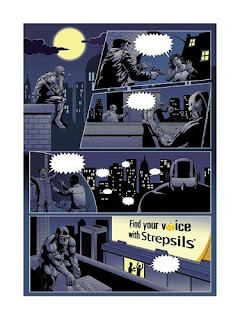 Listerine - The taste people hate, twice daily
Listerine - The taste people hate, twice dailyWhat would come to your mind when you hear the name “Listerine”? Most of you may answer the famous mouthwash brand. But to your surprise, it was not invented as a Mouth washer but initially it was marketed as floor cleaner and as a solution that cures Gonorrhea. Listerine name was given after the name of Dr. John Lister, who performed the first ever antiseptic surgery.
In 1879 two doctors- Dr. Joseph Lawrence and Dr. Jordan Wheat Lambert formulated the solution and licensed it under trade mark of Lambert & Co.
Today marketers talk about creating a category to be a no. 1 brand. This lesson can be best described by Listerine. This brand was the not a great success until the smart marketers of Listerine created a condition called Halitosis (a medical term for bad breath). Before that bad breath was never taken seriously. The brand was positioned as killer of bacteria that causes bad breath in mouth. As a result, till date Listerine is the one of the highest sold brand in oral care segment. In 1914 it became so popular it got the credential to be one of the first prescription products to go as OTC and was immediately followed by other mouth-wash products.
Thus, Listerine became market leader in the category. To utilize this numero uno position, Warner-Lambert pharma company experimented brand extension of Listerine into tooth-paste, for treatment of dandruff and dry scalp, beauty treatment for skin, antiseptic for cuts, deodorant and after-shave lotion. Till 1976, it was also marketed as remedy for cold and sore throat.
In the 1980s, Listerine started losing its numero uno position to Scope and other private labels. Scope, the brand form the sable of Procter & Gamble, was positioned opposite to Listerine. Contrary to Listerine, it was positioned as a mouth wash brand that “tastes good”. Very shortly thereafter, Scope became largest selling mouthwash brand. Listerine was now considered as old fashioned brand. During 1990s several re-positioned attempts were made but it was not gaining required momentum.
Meanwhile Pfizer acquired the Warner-Lambert Pharma company in $90 billion. This deal made Pfizer the second largest pharma company overnight and with few other brands, Listerine was now in Pfizer’s hand. Listerine was still losing its market share and there was no platform for brand extension. While going through market research data, brand managers of Listerine accidentally came across a research outcome that proved that Listerine was also reducing gingivitis better then brushing and flossing. Eureka! The new positioning platform for Listerine was made. But here they also wanted to make sure that this positioning does not make Listerine an occasional remedy rather then a preventive daily oral care brand. The Brand Mascot, Action Hero was created to fight gingivitis by Ad Agency. The result was immediately visible in balance sheet. With high brand recall value of Action Hero, Listerine again gained No.1 position leaving Scope behind.
This gave Pfizer a sustainable platform to launch PocketPacks – strips that quickly dissolves in mouth and gives the same benefits of Listerine. Just within two months, Listerine became the no. 1 brand in a Pocket Pack category that was created by Listerine again. It seems history was repeated here. Just after six month it achieved brand awareness of 95% in US.
In the first year itself, Listerine PocketPacks outpaced its own sales prediction by 42%. Even though they stopped advertising, Listerine continued to grow at double digit rate. Because of success of Listerine PocketPacks, Listerine brand also gained market share because consumers who bought PocketPacks also turned back to Listerine mouthwash. Pfizer immediately launched other flavors like Orange mint and Listerine Whitening. This also resulted in spurt in entire Oral care category.
Listerine in India
Mouthwash category market size in India is at around Rs. 45 cr.( compare to Rs. 2800 cr. in US ) with more than 10 players fighting for the market share. Since Mouthwash product is more like a therapeutic rather than daily use and cosmetic product, it is sold as prescription and OTC brand both. More than 75% of sales comes from prescription market. Listerine dominates the OTC market with more than 90% market share. Betadine, Clohex and Hexidine are the major brands in prescription market. Demand in this category is mainly generated by medical practitioners as a medicine for gingivitis. In western countries, this product is regularly used as a part of morning activities and after meal. So for marketers in India, challenge lies into changing consumer behavior from therapeutic care to preventive care.
In India Listerine was marketed by Park - Davis pharma company- the company which Warner-Lambert acquired in 1976. In June 2006, Johnson & Johnson acquired Pfizer's Consumer Healthcare division and Listerine ( along with Caladryl, Benadryl and Benylin ) went into Johnson & Johnson's hands.
Interesting Facts:
Robert Wood Johnson, the founder of Johnson & Johnson was inspired by work of Josheph Lister ( Listerine name was derived from name of John Lister ) and went on to found J&J. Exactly after 130 years in 2006, J&J bought Listerine form Pfizer.
 Listerine - The taste people hate, twice daily
Listerine - The taste people hate, twice daily
















